WASHINGTON — Each year following the President’s State of the Union address, Amtrak issues a report card to Congress that explains how the company has performed over the previous year, while transmitting its “wish list” for.
The 2020 version of this document, quietly released over Valentine’s Day weekend as part of a “General and Legislative Annual Report and Fiscal Year 2021 Grant Request,” contains the usual justifications for Amtrak’s annual operating and capital grants. The company seeks funding similar to current levels for existing Northeast Corridor and National Network (state-supported and long distance) service, despite an executive-branch budget which proposes drastically slashing those amounts (see table).
But this year’s document also suggests a new funding mechanism which, Amtrak argues, would encourage states to invest in “high-frequency rail corridors between major population centers” that would “modernize” its national network. The plan seeks to have the federal government pay for early capital and operating investments.
Characterizing Amtrak’s current route structure as having “limited utility” because there are many “fast-growing regions and corridors throughout the country that are underserved — or not served at all,” management is asking Congress for an additional $300 million specifically to develop “high-potential corridors.”
Amtrak’s proposed Corridor Development Program would evaluate implementation plans for new short-distance routes based in part on capacity improvement requirements; access and cooperation from host railroads; ridership and revenue projections compared with estimated capital and operating costs; and the viability of long-term state commitments to continue funding after federal grants expire.
If a corridor is selected and “a memorandum of agreement is in place between Amtrak and a state entity,” the company “may pay” up to 100% of capital costs necessary to initiate new or additional service; “fully-allocated operating losses and capital costs” for the first two years;” then 90%, 80%, and 50% of those expenses, respectively, for the next three years.
The idea to give states incentive to develop a passenger rail corridor by substantially defraying startup costs. Amtrak boasts in its proposal to Congress that it “takes a systemwide lens to these investments to ensure efficiencies in operations, procurement, and supporting services.”
The opaqueness of Amtrak’s lens, however, is only one of the congenital weaknesses in management’s latest scheme to re-orient business into short corridors fully paid for by states as an alternative to its current interconnected national network. There are at least three other significant problems:
— Amtrak still would determine costs: States must pay whatever costs Amtrak charges, based on a uniform allocation formula required under Section 209 of the Passenger Rail Investment and Improvement Act’s Section 209, coupled with company claims that its data is proprietary. Operating authorities have challenged this arrangement for years, and have recently become openly critical of their inability to manage or control costs [see “Is Amtrak the only state option?” “Passenger,” April Trains].
— Host railroads still control access: In its legislative request, Amtrak asks that the Surface Transportation Board “conduct an independent assessment … to determine what capital improvements funded by or on behalf of Amtrak are necessary to mitigate unreasonable impairment” of freight trains. Capital-improvement demands by host railroads have been a frequent barrier to adding or increasing service, as illustrated by the passenger railroad’s experience along the Gulf Coast. Despite generous federal funding and active local support, efforts to reestablish two round trips along the former route of the Sunset Limited and three now-discontinued New Orleans-Mobile, Ala., state-supported trains has been thwarted by years of billon-dollar demands by CSX Transportation that Federal Railroad Administration analysts have questioned. The latest “study” is expected in June.
Amtrak senior officials have yet to acknowledge that their vaunted multi-frequency corridor playbook requires host railroads to grant access without inflated capacity improvement requirements. In the meantime, the company has, since the failed mail-and-express initiative of the late 1990s, made no effort to increase frequencies on its existing network. These could add revenue against fixed route costs it already incurs.
— State support may be fleeting: Developments on the Gulf Coast also show the difficulty in getting every contributing entity to sign on. Alabama Gov. Kay Ivey has refused to endorse the New Orleans-Mobile rail venture even though any state commitment would not kick in until three years after service began, if at all. In the last decade, her counterparts in Ohio, Wisconsin, and Florida killed state funding on federal corridor projects that had been spearheaded by previous administrations of the opposite political party.
Among other suggestions in Amtrak’s legislative request are that Congress establish a Passenger Rail Trust Fund to pay for big-ticket infrastructure investments. It also urges passage of a tax credit that would allow host carriers to deduct costs for capacity or speed-enhancing investments against federal tax liabilities. This is similar to the track maintenance credit now utilized by Class II and Class III short lines.
But the request also signals other management intentions by advocating establishment of a “Long Distance Intercity Passenger Rail Working Group.” It would recommend how states and communities might improve and seek grants to financially support intercity trains passing through their region, or instigate “station development and host programs.” What Amtrak would do with the working group’s conclusions, or how it change the company’s obligations, isn’t clear.





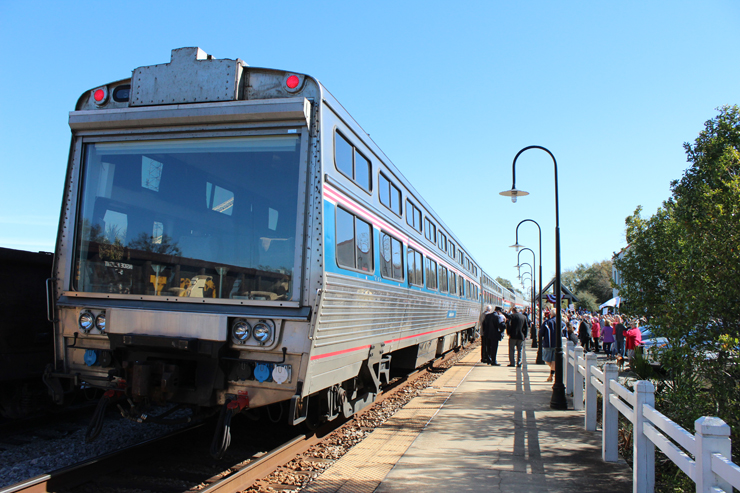
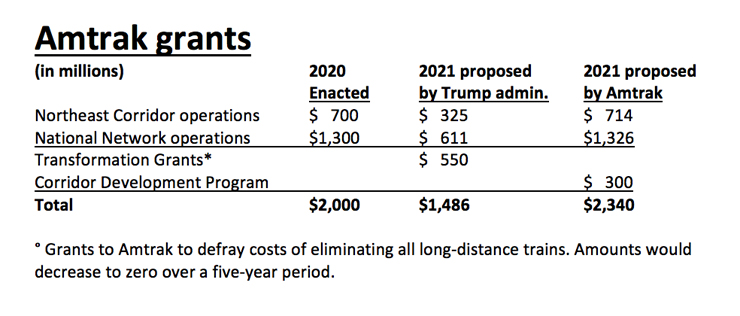
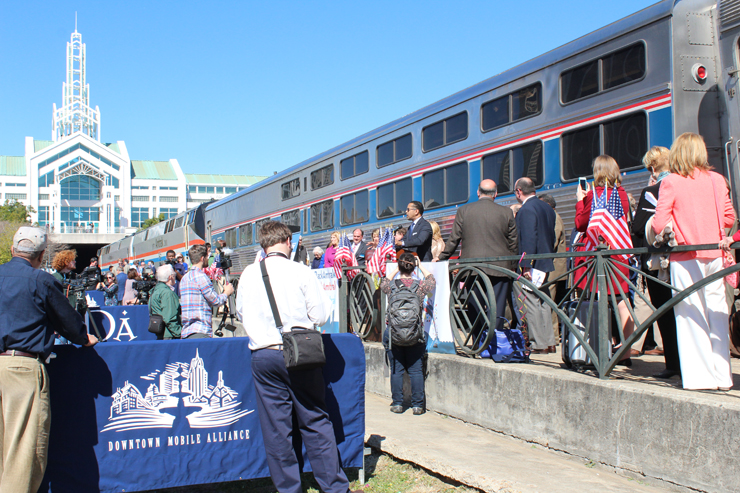

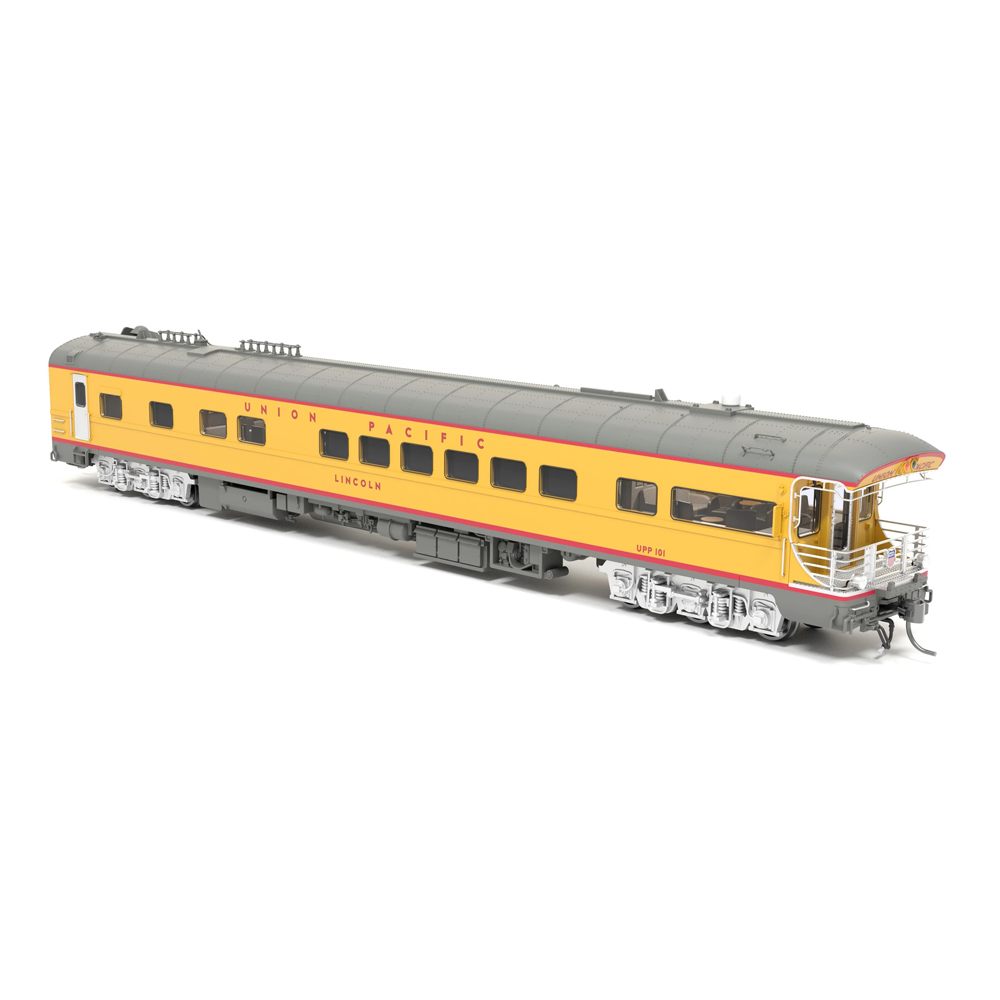
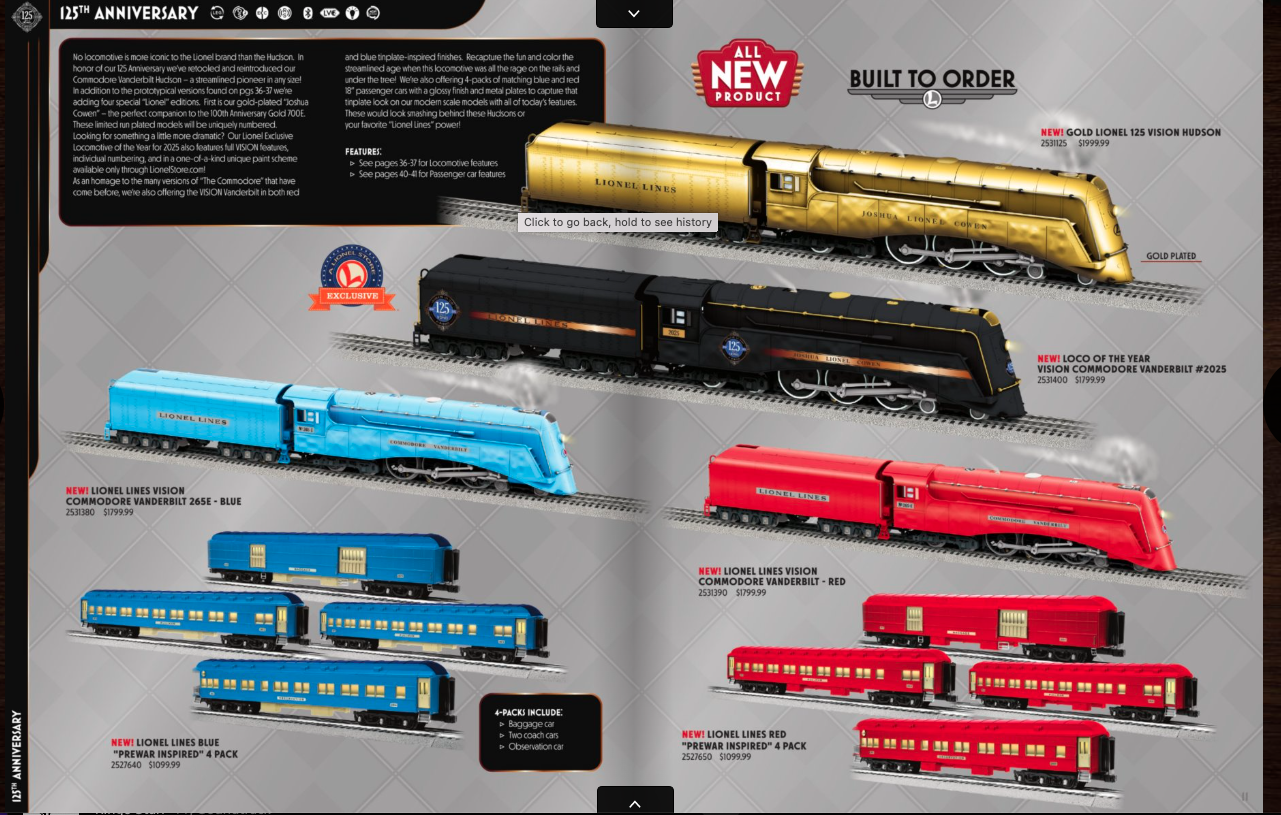






It was not thrown together at the last minute. The environmental impact statements had been completed and the project had been planned for years. Please learn the facts or present the truth if you’re going to comment.
Mark, thank you for correcting the revisionist history that the die hard Walker supporters like to spout. Walker’s position on the train was terrible public policy and hurt Wisconsin. It cost Wisconsin taxpayers dearly with nothing to show for it. I lived in Sauk County at that time, and Edward Kramer and Sons were already working on the concrete trestles that would have replaced the wood trestles on the line from Watertown to Madison. That’s a natural, high speed line, straight, and those concrete trestles would have been a great improvement. Instead, during the height of the recession, good jobs were lost. It’s just sickening to think what might have been. An easy bike ride to the station, on the train, and an hour later in Milwaukee or Madison, both bike friendly communities. Will Wisconsin ever enter the 21st century? I got tired of waiting.
I believe a couple if not all of those counties passed resolutions supporting rail. There are an incredible number of inaccurate statements that I don’t intend to debate. But the Chicago, Milwaukee, Madison had widespread and bipartisan support until Walker decided to play his Koch induced game and cancel the service. Comparisons to pre-Amtrak Madison service are ridiculous. Madison was a modest sized city of perhaps 80,000. The area is close to 230,000 now. You have a thriving campus of close to 50,000 students, many of whom live in Milwaukee and Chicago and a new generation that eschews cars. The Madison extension would build off the highly successful Hiawatha, and all studies showed it would have been extremely successful. It would be more so now. Sadly, the comments are out of touch with current transportation trends, and reflect revisionist history about the cancelation of the rail project which was pure, political bunk. The Chicago to Twin Cities HSR route was planned, and will eventually, run through Madison when the current dinosaurs pass from the scene. I left Wisconsin partly because the nagging nabobs of negativism squash every positive idea. While the rest of the country develops rail, Wisconsin can’t even do a sixty mile extension to the state capital. Really sad, but typical.
ERICH – Playing with trains on the “Air Line” and thinking about closing a bike path that would never be closed (I myself use it, along with countless others) of course there would be additional problems:
(1) Would need a direct connection into the downtown Milwaukee station. As a freight line in its day, no such connection was needed.
(2) The rebuilding of Hwy 18 in Elm Grove a decade ago obliterated the grade crossing and cut through the former railroad grade at a lower elevation. In any event, this skew crossing wasn’t ideal, compared to a 90-degree grade crossing. A bridge over Hwy 18 (a/k/a Bluemound Road) would cost a fortune.
(3) North of Hwy 18 in Elm Grove, the line was obliterated for flood control, the partial solution to the annual hundred-year floods in 1997, 1998 and 1999.
Charles, Milwaukee called that “the Air Line” during its’ day. Remember watching through Freights use it to bypass a slower moving freight on the mainline via Wauwatosa. Hand thrown switch in Elm Grove to that branch from the main. The Air Line would come into the Menominee River Valley, Milwaukee Road yard complex on the Southern end and eventually rejoin the mainline South of the now current Amtrak depot. It is still used West of Muskego yard for a ways but not sure how far.
On the ownership of the CPR line it would be a joint venture with Metra and so no it would not end at the Illinois State line. The plan is for the CPR trains to use the ex-CNW to Glenview then cross the current CP line near or at Glenview using ex-C&NW track to access Bensenville, IL. Remember the Hiawatha trains are supported via the State of Illinois as well on a 75% Wisconsin, 25% Illinois funding formula. METRA rail and ILDOT both stated they support expansion and improvement of the Hiawatha service and are open to future service enhancements. Your probably right in that METRA might not fund improvement in the speed of the track above what they need. However, they are definitely on board with relocation of CP Freight train activity off the line entirely. The Chicago to St. Paul daytime service being proposed would be funded jointly by DOT’s of Illinois, Wisconsin and Minnesota.
ERICH Thanks for your post. Unfortunately you forced people around North America into the tongue-twister that is Oconomowoc. Only we who live here in Waukesha County can pronounce it.
No I’ve not seen any of the crossings in Oconomowoc, me not having been to downtown Oconomowoc in ages and ages. The only upgraded crossing I’ve seen (it’s been there forever) is on WSOR by Hill Farms (Madison) behind WisDOT HQ. Nothing on the Hiawatha route as far as I can recall. Obviously the Hill Farms crossing is a demonstration given the location (as I said behind WisDOT) and the railroad (virtually zero traffic).
Regarding a re-jiggering of trains CPRy and UPRR, the elusive “next and final round of mergers” is projected to include those two carriers. CPRy to PRR along with CNR to BNSF.
As for WisDOT’s plans for either railroad, all that ends at the Illinois state line.
Now here’s a comment that will get everyone mad at me, including me getting mad at me. The Hank Aaron bike trail is extremely busy – I ride it myself, the best bike route from the west suburbs into Milwaukee. It also sees many walkers and joggers dodging the bikers. This is (for those not familiar) the former MILW branch formerly serving West Allis industries such as Allis Chalmers (long gone) and other shippers long since converted to truck. TRAINS MAG readers might remember that the Quad Graphics printing plant in West Allis requires a truck haul from Sussex for Canadian paper stock. This location was once a rail-served machine tool factory but after converted to printing never used rail.
It’s a straight shot compared to the curvy CPRy line through Wauwatosa and also lacks the grade crossing baggage of the downtown Wauwatosa main. Not a spur, it connects to the main at both ends, Milwaukee on the east and Elm Grove on the west.
Shorter than the roundabout Wauwatosa route, it may have a higher ruling WB grade – which doesn’t matter at all for passenger. If we bikers can handle the WB grade so could Amtrak.
Except that it was single track compared to the double-track main, it would have made a better route for passenger trains west from Milwaukee, once all the West Allis industrial sidings were closed. It was an obvious route for the various light rail proposals that have come and gone. But now that it’s a popular recreation trail you’d never get the bicycles and pedestrians off it.
Curtis, I think you will find that CP’s objections to HSR are not anything to be concerned about. Because Wisconsin has the power to force the issue at some point using taxpayer money to buy the line from CP and plans to do that via their published and public studies written on the subject. Long term the WisDOT plan is to move CP to the C&NW (now UP line) and purchase the Chicago to Milwaukee line from CP. Yes they are working through conditions laid out by CP for Hiawatha expansion to 10 trains a day. The expansion to 10 round trips a day could very well be the last improvement in frequency under CP ownership of the line. The vision for a higher speed Chicago to Milwaukee experience similar to what the Europeans have. WisDOT is working slowly towards that goal. First was converting a good portion of the route to welded rail, second they are working on an increase in overall speed limit to 90 mph North of Metra territory. Thats probably it for speed until they purchase the rail line from CP but who knows how much further they can get with CP ownership of the line. I doubt that WisDOT will move for much beyond 90-110 mph for the Chicago to Milwaukee line as the cities are too close and the land too urbanized that in the immediate future it does not make sense to spend the money there and honestly the Milwaukee Road never did either. The real speed gain is between Milwaukee and St. Paul and I suspect that is how WisDOT views it as well but I never asked or researched that so it is just speculation on my part. However, note that even after cancellation of the Madison HSR route. WIsDOT is still improving RR crossings on the Milwaukee to Twin Cities route to the higher speed anti-automobile intrusion standard (have you seen some of the crossings in Oconomowoc recently?). They are following a plan still with the RR crossings at least.
CURTIS – Thanks for making my point on the differences between Milwaukee – Madison and KRM. We actually agree! We were sniping at each other but it turns out we have much the same opinions! ERICH thanks for the support!
Chicago to Madison? If that ever happened I would hope it would be a far better train than 1960’s acommodation U-Wisconsin grads of a certain (advanced) age remember. As we know, what was back then an afterthought of a of a MILW branch is worse now.
Amtrak actually used to serve half that route. For a few years Amtrak had Chicago to Janesville for two reasons: (1) Former Wisconsin Governor Tommy Thompson was on the Amtrak board and (2) there was a hope for freight trailers but this never happened.
The Chicago to Janesville train was truly pathetic and truily embarrasing. One summer on the way home from Illinois Railway Museum, we passed the Amtrak “Lake Geneva” station which was actually at a cornfield named Zenda six miles south from Lake Geneva on the Illinois – Wisconsin state line. The stop looked like it could go a month without loading more than five passengers. Six miles later (this was before the Lake Geneva road bypass was opened) we’re driving through a huge summer crowd at the beach, thousands of people. If even one of these tourists arrived at Zenda by train I’d be way past shocked.
Pretty much apples vs. oranges. The KRM proposal called for the creation of a regional transportation district as 3 counties would be involved, also some sort of tie in with Metra at Kenosha, the whole shebang recreating C&NW type services. Death by a thousand cuts and the glacier in Hades before the proposed RTD is resurrected. BTW…travelers in that corridor had the choice of 3 lines back when: TMER&L, CNS&M, C&NW.
And the Hiawatha expansion was(is) mislabeled as HSR. One might take note of CP’s issues with moving beyond 79mph Chicago-Milwaukee; even 110mph is not HSR. And here’s a laffer: years ago I spent a fine afternoon in the Rondout tower after being invited up…and the operator informed me that CP freights routinely exceeded 79mph through the interlocking…the Ranney curve sign “Reduce to 90” a fond memory. Perhaps those CP hoggers were old Milw. Rd. guys. In 1950 an F-7 Hudson blew a piston at 100mph through the suburb of Edgebrook, Ill. but did not derail, the flailing main rod gouging a mile and a half of track.
Agree with Charles as a long time Wisconsin resident that grew up next to the Chicago to Twin Cities Corridor. The Madison routing was thrown together at the last min to meet an offer of Federal Funds. Not a lot of thinking or planning went into it by WisDOT. Governor did the right thing by rejecting it and Wisconsin is still moving forwards to develop the original HSR corridor of Milwaukee Road fame which the Empire Builder uses that bypasses Madison to the North. Sensible from a cost sharing standpoint with Minnesota since Minnesota does not support the Madison routing either and the Madison routing was never submitted to the Midwest HSR compact as a viable HSR routing by WisDOT. I would have done the same thing and rejected it if I were Governor at the time (though it was probably NOT the real reason it was rejected). If Madison were a viable HSR passenger routing the private railroads would have amended their route structure a long time ago and offered the train service prior to Amtrak. Fact is, niether the C&NW nor the Milwaukee Road offered any such service. I am all for rail service to Madison that is not high speed but think true HSR would be a waste of money to that city from Milwaukee. Perhaps there might be a Chicago to Madison market? Not sure.
Oh, RELL, me again. Your Madison train. Would pass through Waukesha Jefferson and Dodge counties. Can you think of a single elected official in all of those three counties who wanted the train? Plz. inform.
RELL “Think of what we could have had if not for that jerk.” you post. I’m thinking, RELL. When it comes to trains I think several hours each week and I can’t come up with anything. Tell me, what would we have had?
BTW Mr. Walker isn’t governor any more but the proposal for the Madison train hasn’t been heard from again. Seems as if the new Democrat governor won’t say so out loud but knows the project was a loser we’re better off without.
RELL – What would we have? Madison hasn’t had decent train service since …. well it never had decent train service, did it? In the five decades of no train service at all, not a single wheel turning, Madison has grown and prospered, a major center of education, state government, and insurance. All that without a train.
Lots of Metro Milwaukee people go to and from Madison every day. The bus service is excellent and the Waukesha stop is right here in the Town of Brookfield a walk from where I live.
CURTIS – I hope you feel better posting about the financial bonanza we Wisconsin reisdents didn’t get to have. Amazing that I lived close to the proposed Madison route the entire time, studied the Madison train proposal in great detail, am familiar with the route, and know a thing or two about passenger trains, yet somehow missed how wealthy we’d be if we had bankrupted ourselves funding it.
BTW I’ve limited my negative comments to the Madison train. I’ve not said anything for or against KRM. I never had a chance to study what was proposed. Maybe it would have worked out, I simply don’t know one way or the other.
It is always unfortunate when ideology trumps reality. The bottom line is that both iniatives: the KRM and the Madison service would long ago have paid for themselves,,,,just pick the many ways, not just increased tax revenue.
Translate Amtrak into a NASA CCap like model.
Works for SpaceX and Blue Origin.
Amtrak will just be the traffic controller and own the stations and track. (kind a like an airport)
Let the market develop the solutions and trainsets. (just like with airplanes)
RELL – Yes Republicans also get a vote. Ore do you think only Democrats should vote in the country.
Sure can blame Walker. He is and was a waste as a person
He cost us in the state millions of dollars, he is the biggest turkey of all. Think of what we could have had if not for that jerk.
Charles i have to laugh when you state waukesha and others would not support the train, the makeup of the residents are Republicians and would not support the train. Think back a few years ago when the plan was made to run a commuter train out west of Milwaukee. The political climate in that area would never support the train. Robin Voss and other Republicans voted down the KRM. Johnson’s wax and others were in favor of these trains to. So Charles your thinking is wrong, these trains could have and should have been started up. Slow thinking and uninformed people brought this on. We should have had these trains.
CURTIS- You might recall that Scott Walker won that election, so it seems like a whole lot of Wisconsin voters (like me) knew the train proposal was a turkey. Gobble gobble.
While Walker wasn’t real big on mass transit, the fact is that like all govs before and since he fully supported the Hiawatha along with local bus transit systems. In my area, Milwaukee County Transit System and the Waukesha Metro buses.
Many reasons why the Madison train flopped in its tracks. One of the biggest was it was undermined by its own advocates who falsely tried to sell it as HSR. It wasn’t. If the train’s own proponents were either liars or ignorant (or both) don’t blame the opponents for killing it.
Re: Wisc. and Walker’s election slogan “we’re gonna stop that train in its tracks, etc” there remain those who deny the facts: $1.1 billion was left on the table for another state to fetch. Then the claim by Walker that Wisc. would be on the hook for operating costs, a bogus figure, would, in any case be exceeded by tax revenue from the hundreds employed in both construction and operation of the new trainsets. Then, adding insult to injury, the Walker admin. lost the breech of contract suit to Talgo, costing the Wisc. taxpayers more millions. In the end, this fiasco could have been avoided and Amtrak could have been running a non-high speed service connecting Madison thru Milwaukee to Chi-town….exactly what this Amtrak proposal is all about.
I advocate that USDOT, the real owner of the NEC, replace Amtrak with a Northeast Railway Development Corp. patterned after the St. Lawrence Seaway Development Corp., to maintain and operate the NEC physical plant as a neutral rail tollway. Amtrak remains as a user, but can focus on introducing and improving passenger services.
The original spearhead in Wisconsin was Gov. Tommy Thompson, a Republican, who served on the Amtrak board. The Midwest Regional Rail System, of which Milwaukee-Madison was an incremental piece, was developed during his administration. During the administration of Gov. James Doyle, a Democrat, WisDOT secretary Frank Busalacchi, was the spearhead. WisDOT saw 15 years of prep work, which had begun in 1996, tossed out when Walker was elected.
Two billion dollars is almost nothing. Seriously. And no Congress Critter wants to have the train through his/her district cancelled but they also don’t want to appropriately fund passenger rail. It’s absurd.
Regarding the NEC, maybe it’s time to dust off the Airnet 21 plan and implement it. Without all that albatross of infrastructure to fool with, Amtrak might be viable.
Start charging the NEC states for their Amtrak service per PRIIA formula as they well should be; then there will be plenty of money to build the tunnels AND increase services. Oh I forgot; too many powerful politicians in those states who freeload at the expense of the rest of the country.